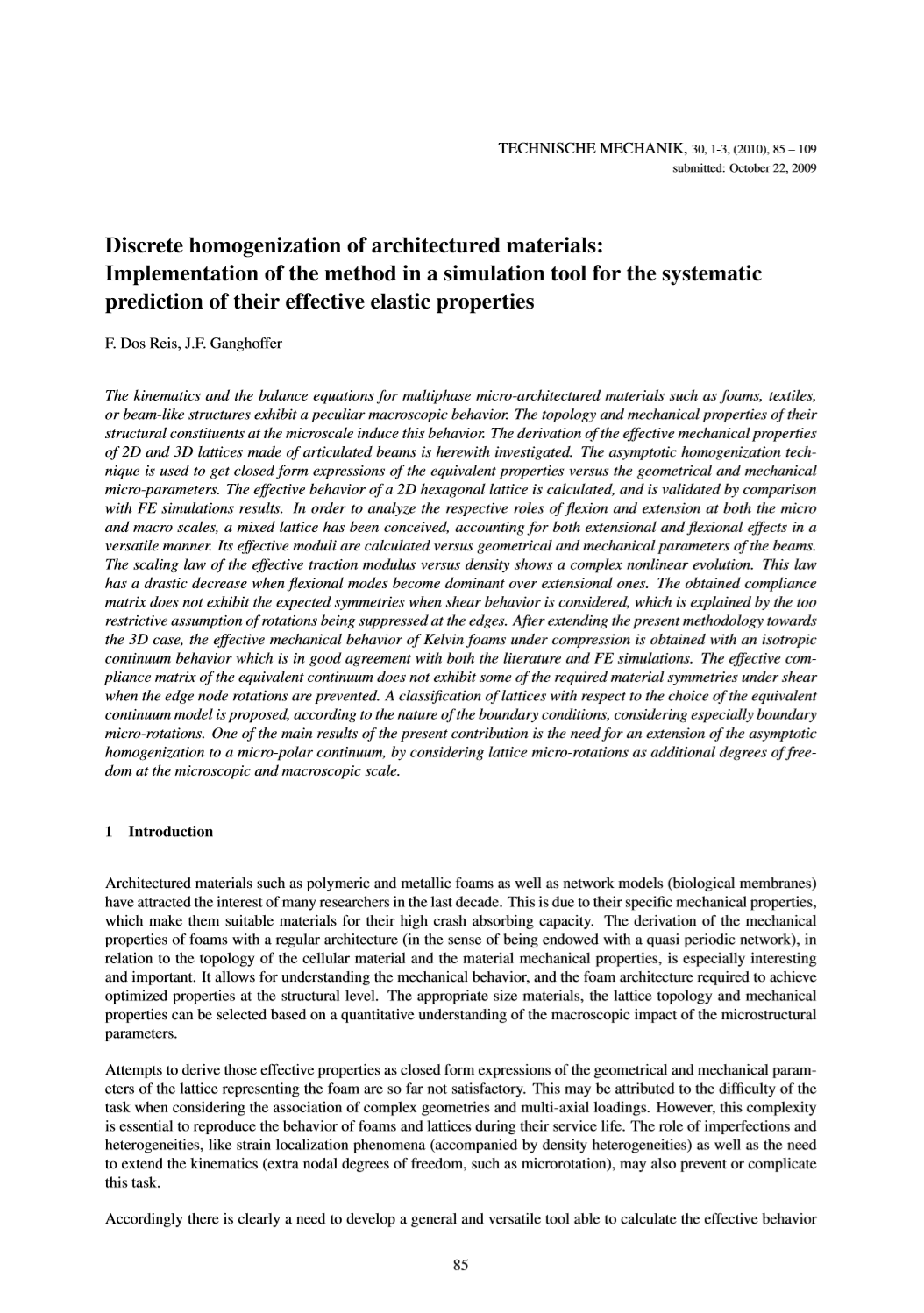Discrete homogenization of architectured materials
Implementation of the method in a simulation tool for the systematic prediction of their effective elastic properties
Abstract
The kinematics and the balance equations for multiphase micro-architectured materials such as foams, textiles, or beam-like structures exhibit a peculiar macroscopic behavior. The topology and mechanical properties of their structural constituents at the microscale induce this behavior. The derivation of the effective mechanical properties of 2D and 3D lattices made of articulated beams is herewith investigated. The asymptotic homogenization technique is used to get closed form expressions of the equivalent properties versus the geometrical and mechanical micro-parameters. The effective behavior of a 2D hexagonal lattice is calculated, and is validated by comparison with FE simulations results. In order to analyze the respective roles of flexion and extension at both the micro and macro scales, a mixed lattice has been conceived, accounting for both extensional and flexional effects in a versatile manner. Its effective moduli are calculated versus geometrical and mechanical parameters of the beams. The scaling law of the effective traction modulus versus density shows a complex nonlinear evolution. This law has a drastic decrease when flexional modes become dominant over extensional ones. The obtained compliance matrix does not exhibit the expected symmetries when shear behavior is considered, which is explained by the too restrictive assumption of rotations being suppressed at the edges. After extending the present methodology towards the 3D case, the effective mechanical behavior of Kelvin foams under compression is obtained with an isotropic continuum behavior which is in good agreement with both the literature and FE simulations. The effective compliance matrix of the equivalent continuum does not exhibit some of the required material symmetries under shear when the edge node rotations are prevented. A classification of lattices with respect to the choice of the equivalent continuum model is proposed, according to the nature of the boundary conditions, considering especially boundary micro-rotations. One of the main results of the present contribution is the need for an extension of the asymptotic homogenization to a micro-polar continuum, by considering lattice micro-rotations as additional degrees of freedom at the microscopic and macroscopic scale.





